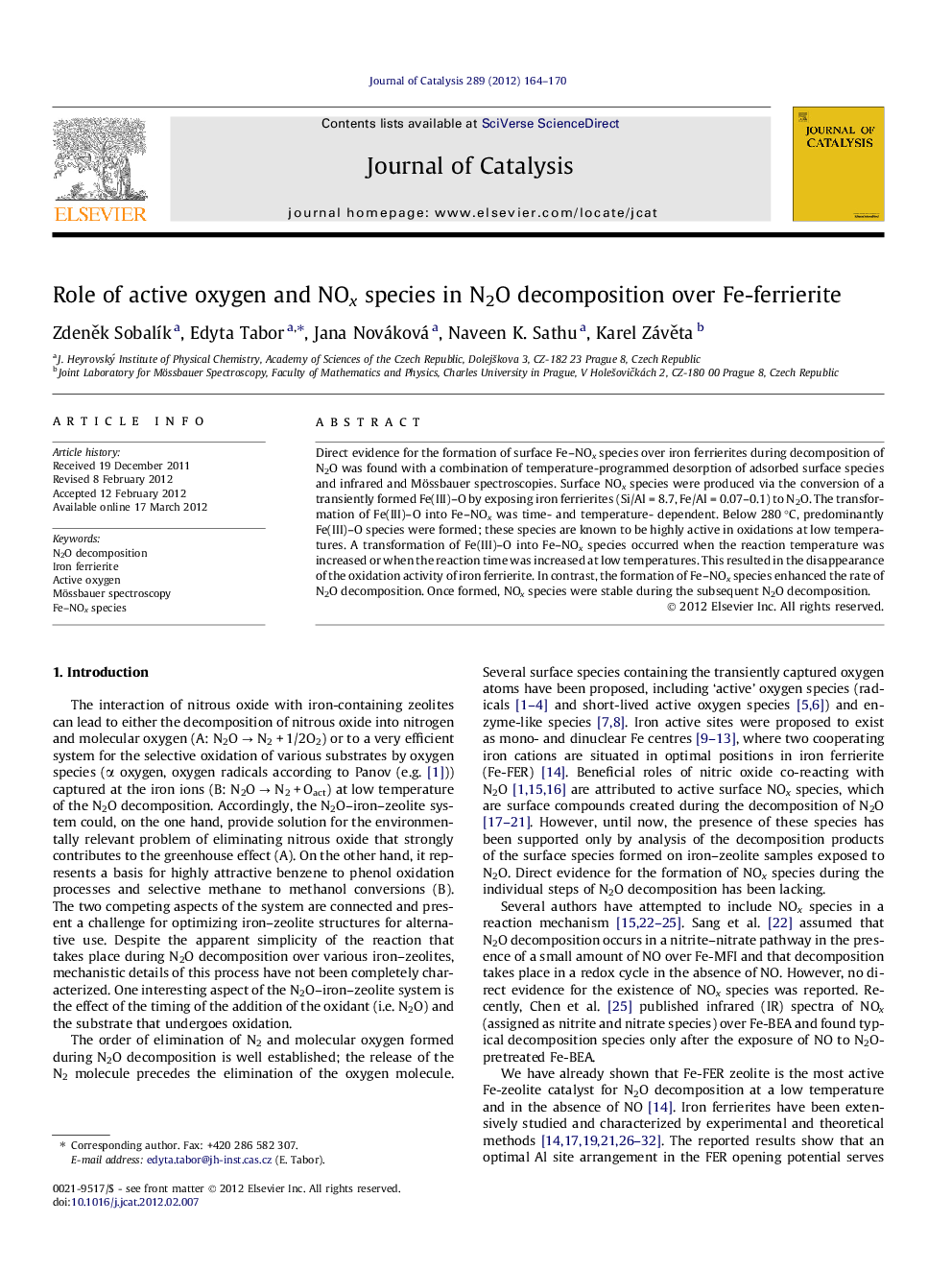| Article ID | Journal | Published Year | Pages | File Type |
|---|---|---|---|---|
| 61451 | Journal of Catalysis | 2012 | 7 Pages |
Direct evidence for the formation of surface Fe–NOx species over iron ferrierites during decomposition of N2O was found with a combination of temperature-programmed desorption of adsorbed surface species and infrared and Mössbauer spectroscopies. Surface NOx species were produced via the conversion of a transiently formed Fe(III)–O by exposing iron ferrierites (Si/Al = 8.7, Fe/Al = 0.07–0.1) to N2O. The transformation of Fe(III)–O into Fe–NOx was time- and temperature- dependent. Below 280 °C, predominantly Fe(III)–O species were formed; these species are known to be highly active in oxidations at low temperatures. A transformation of Fe(III)–O into Fe–NOx species occurred when the reaction temperature was increased or when the reaction time was increased at low temperatures. This resulted in the disappearance of the oxidation activity of iron ferrierite. In contrast, the formation of Fe–NOx species enhanced the rate of N2O decomposition. Once formed, NOx species were stable during the subsequent N2O decomposition.
Graphical abstractFigure optionsDownload full-size imageDownload high-quality image (116 K)Download as PowerPoint slideHighlights► Fe-FER employed as catalysts for N2O decomposition and selective oxidations. ► Surface species in N2O decomposition over Fe-FER are time and temperature dependent. ► Below 220 °C and up to 30 min of interaction predominantly Fe–O species are formed. ► Above 280 °C mainly Fe–NOx species are observed even after short interaction.
